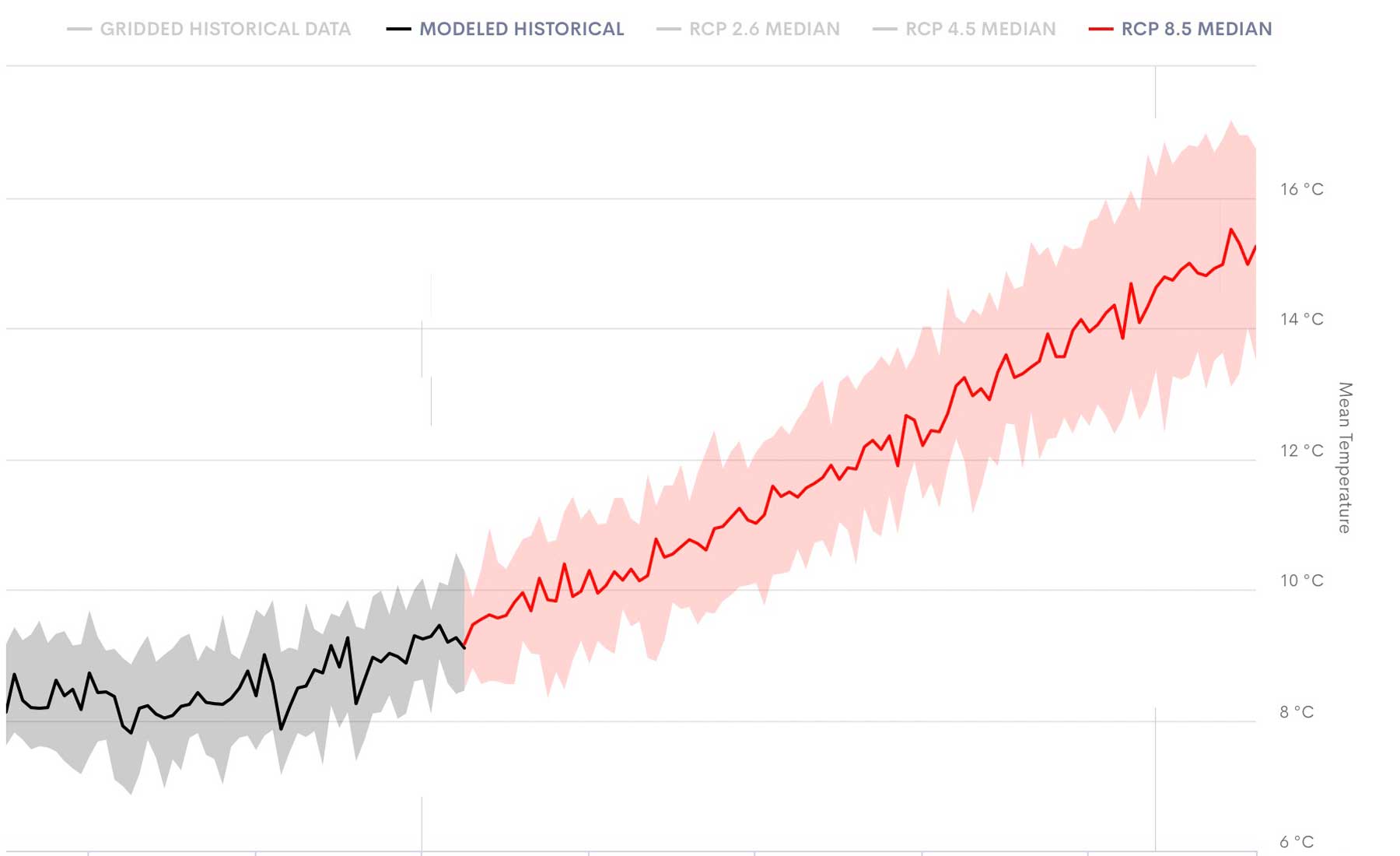 In a previous blog post, we discussed how to take initiative towards adapting to and mitigating (reducing) the effects of climate change. However, before we can discuss specific methods of actually doing so, it is important to first understand the historical and predicted future climate trends in the Greater Niagara Region.
In a previous blog post, we discussed how to take initiative towards adapting to and mitigating (reducing) the effects of climate change. However, before we can discuss specific methods of actually doing so, it is important to first understand the historical and predicted future climate trends in the Greater Niagara Region.
A great tool for understanding climate trends across Canada is the publicly accessible website climatedata.ca. It provides climate data that helps individuals, communities and governments better understand historical climate data and make informed decisions for a more resilient Canada in the future. The website provides past, present and current climate trends for multiple locations in Canada. The data can be analysed on a broader provincial level or drilled down to look at specific municipalities or townships. Specific climate variables, such as temperature, precipitation, frost days and growing days, are also available. This information can be extremely valuable when trying to plan adaptation and mitigation measures in your community, for infrastructure, on farmland and even at your own personal residence. For example, frost days (number of days where the temperature drops below 0˚C) are particularly important in the Greater Niagara Region as the agricultural sector is a main economic driver for the area.
The website generates graphs of climatic trends under three future greenhouse gas emission scenarios, also known as representative concentration pathways (RCPs). These RCPs were generated by the United Nations’ Intergovernmental Panel on Climate Change (IPCC). RCPs represent the degree of warming of an area or location (translated in watts per square meter) under different scenarios. Those scenarios range from acting rapidly to reduce greenhouse gas emissions to not acting at all and keeping a business-as-usual way of life. They include a low emission scenario (RCP2.6), moderate emissions scenario (RCP4.5) and high emissions scenario (RCP8.5). The RCP2.6 scenario leads to the least warming and reflects a future that uses immediate efforts to drastically reduce greenhouse gas emissions. RCP4.5 models a future in which some mitigation of emissions prevents the extreme warming of the high emissions scenario of RCP8.5. Analysing the high emissions scenario (RCP8.5) on the website allows you to understand and prepare for the worst-case scenario when dealing with climatic trends. Unfortunately, due to trends and behaviours we are currently seeing in Canada, such as increases in population, pollution, and deforestation (among others), the RCP8.5 scenario may become the most probable one.
We used the website to find data about the Niagara Region under a high emission scenario (RCP8.5). Using the website, the climatic trends reported for this area show that the annual average temperature in the region was between 8.4 ºC and 9 ºC between 1951 and 2020. Under a high emissions scenario, annual average temperatures are projected to be 10.9 ºC by 2050, 12.9 ºC by 2080, and will continue to rise above 14.3 ºC by 2100. Average annual precipitation in the region was historically 866 mm. Under a high emissions scenario, this is projected to be 7% higher by 2050, 10% higher by 2080 and then 14% higher by 2100.
Rising temperatures and precipitation rates can have a significant impact on agriculture, coastal communities and the overall health of individuals in the Niagara Region. Over time, climate change has become more severe and in order to take initiative and make change, we must adapt and mitigate so we can slow or stop these trends from climbing.
It is important to note that these climatic trends are projections, meaning they are just a model and may not be 100% accurate. However, they do provide guidance as to what the future may hold for our region. With a proper understanding of the potential climatic changes Niagara could be facing, it allows us to be more prepared and create more efficient adaptation and mitigation plans. In upcoming blogs, we will discuss strategies that can be used to manage these projected climatic changes and how we can initiate change.
The researchers involved with the MEOPAR project are working to raise awareness about the impacts of climate change and how communities can effectively adapt and increase resilience to these changes. Follow along with our blog every week (written by researchers Liette Vasseur, Meredith Caspell, Bradley May, Sam Gauthier & Jocelyn Baker) to learn more about the project and how you can get involved. You can also visit our website at brocku.ca/unesco-chair or email us at meopar-lincoln@brocku.ca
Caption: A graph from climatedata.ca that illustrates the rising mean temperature from the years 1950-2100 under a high emissions scenario (RCP8.5). This increase in mean temperature can lead to negative impacts for agriculture, coastal communities and the overall health of individuals in the Niagara Region.
 Back to myNiagaraOnline
Back to myNiagaraOnline































